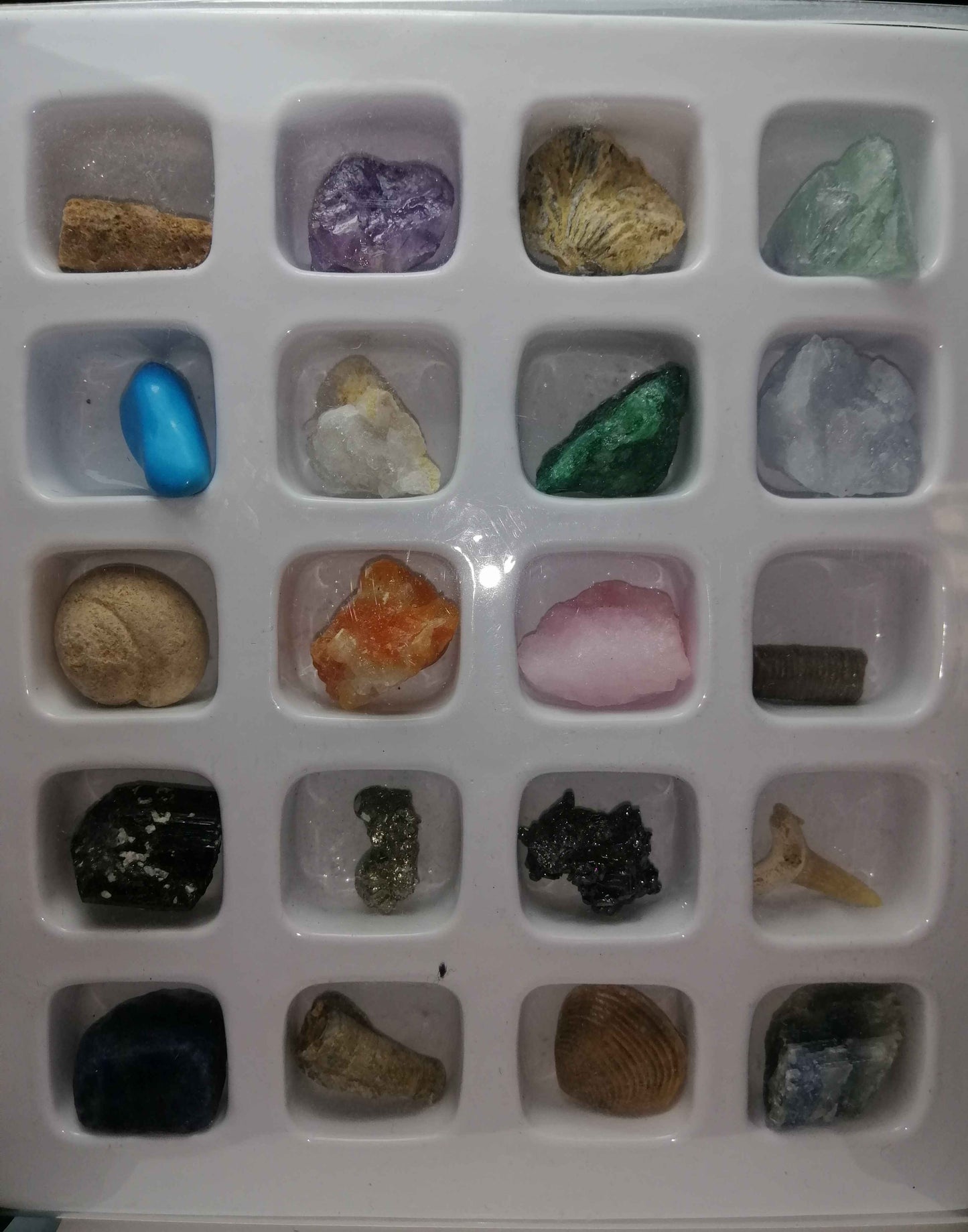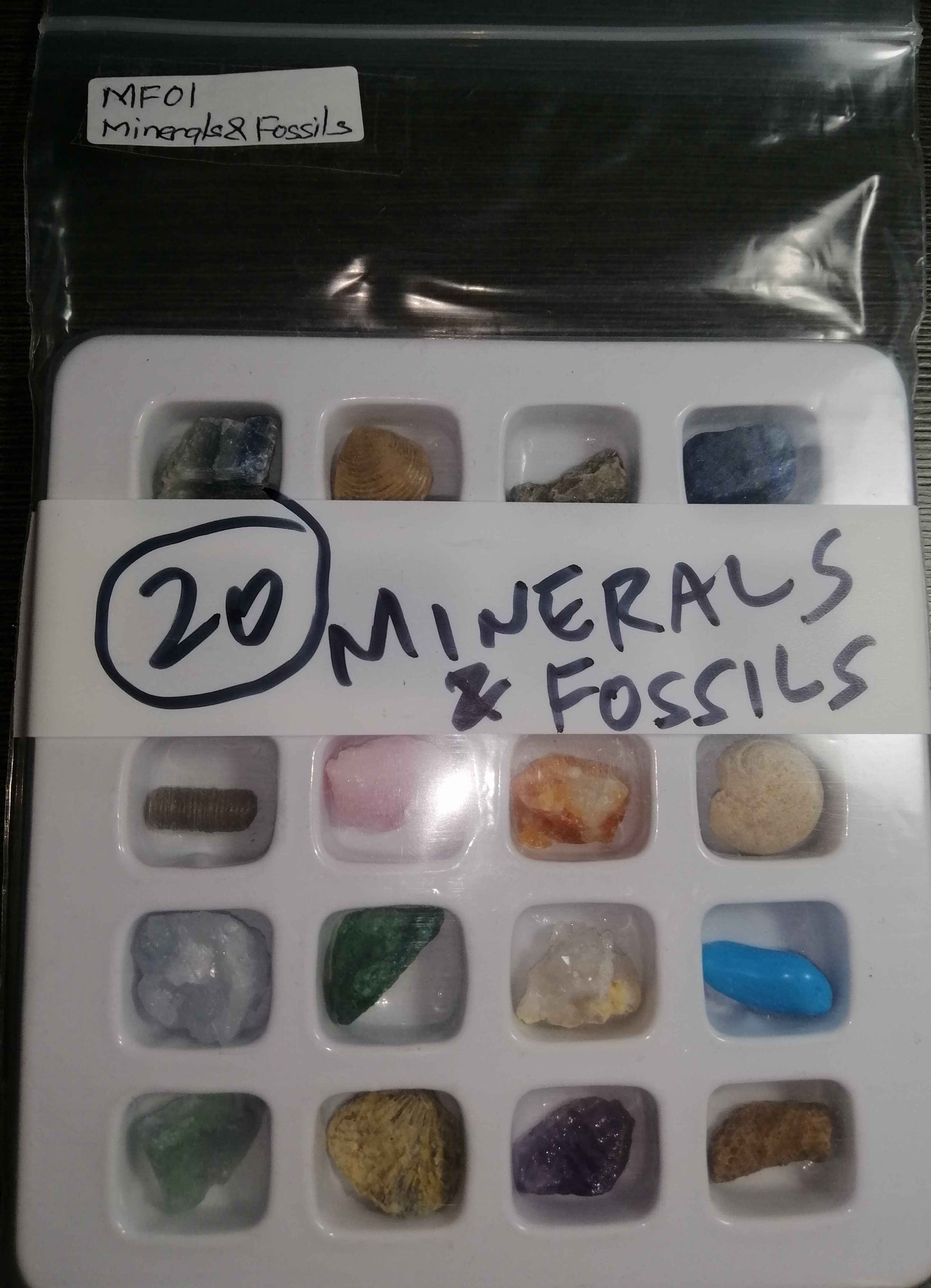1
/
of
2
cherrygemssg
NATURAL MINERALS AND FOSSILS
NATURAL MINERALS AND FOSSILS
Regular price
$15.00 SGD
Regular price
Sale price
$15.00 SGD
Unit price
/
per
Shipping calculated at checkout.
Couldn't load pickup availability
Minerals and fossils are both fascinating aspects of Earth's history and natural formations, but they have distinct characteristics and origins. Let's explore each of them:
Minerals:
Minerals are naturally occurring inorganic substances with a specific chemical composition and crystal structure. They are the basic building blocks of rocks and the Earth's crust. Here are some key points about minerals:
Composition and Structure: Minerals are made up of specific chemical elements arranged in a regular repeating pattern, forming a crystalline structure. This arrangement gives minerals their unique physical properties.
Variety: There are thousands of different mineral species, each with its own set of properties, colors, and uses. Some common minerals include quartz, feldspar, calcite, and mica.
Formation: Minerals can form through various geological processes, including crystallization from magma or lava, precipitation from aqueous solutions, and metamorphism (changes due to heat and pressure).
Properties: Minerals have distinct physical properties, such as hardness, cleavage (how they break), luster (how they reflect light), color, streak (color of their powdered form), and more. These properties are useful for identification.
Uses: Minerals have a wide range of practical applications. They are used in construction materials, electronics, jewelry, manufacturing, and various industrial processes.
Fossils:
Fossils are the remains or traces of ancient living organisms preserved in rocks over millions of years. They provide important insights into Earth's history, evolution, and past environments. Here's what you should know about fossils:
Types of Fossils: Fossils can include actual remains of organisms (such as bones, teeth, and shells), as well as traces like footprints, tracks, burrows, and imprints. Fossils are often found in sedimentary rock layers.
Preservation: Fossils form through various processes, including mineralization (replacing organic material with minerals), petrification (turning organic material into stone), and carbonization (leaving behind a carbon residue).
Geological Time: Fossils provide a record of life on Earth over millions of years. They help scientists understand the history of life, including the evolution and extinction of species.
Scientific Significance: Fossils are essential for paleontology, the study of ancient life forms. They contribute to our understanding of evolutionary relationships, species distribution, and past ecosystems.
Cultural and Educational Value: Fossils are not only valuable to scientists but also to culture and education. They inspire curiosity and provide tangible connections to the past.
In summary, minerals are naturally occurring inorganic substances with specific chemical compositions and structures, while fossils are the preserved remains or traces of ancient organisms that provide insights into Earth's history and the evolution of life. Both minerals and fossils are important aspects of Earth science and contribute to our understanding of the natural world.
Minerals:
Minerals are naturally occurring inorganic substances with a specific chemical composition and crystal structure. They are the basic building blocks of rocks and the Earth's crust. Here are some key points about minerals:
Composition and Structure: Minerals are made up of specific chemical elements arranged in a regular repeating pattern, forming a crystalline structure. This arrangement gives minerals their unique physical properties.
Variety: There are thousands of different mineral species, each with its own set of properties, colors, and uses. Some common minerals include quartz, feldspar, calcite, and mica.
Formation: Minerals can form through various geological processes, including crystallization from magma or lava, precipitation from aqueous solutions, and metamorphism (changes due to heat and pressure).
Properties: Minerals have distinct physical properties, such as hardness, cleavage (how they break), luster (how they reflect light), color, streak (color of their powdered form), and more. These properties are useful for identification.
Uses: Minerals have a wide range of practical applications. They are used in construction materials, electronics, jewelry, manufacturing, and various industrial processes.
Fossils:
Fossils are the remains or traces of ancient living organisms preserved in rocks over millions of years. They provide important insights into Earth's history, evolution, and past environments. Here's what you should know about fossils:
Types of Fossils: Fossils can include actual remains of organisms (such as bones, teeth, and shells), as well as traces like footprints, tracks, burrows, and imprints. Fossils are often found in sedimentary rock layers.
Preservation: Fossils form through various processes, including mineralization (replacing organic material with minerals), petrification (turning organic material into stone), and carbonization (leaving behind a carbon residue).
Geological Time: Fossils provide a record of life on Earth over millions of years. They help scientists understand the history of life, including the evolution and extinction of species.
Scientific Significance: Fossils are essential for paleontology, the study of ancient life forms. They contribute to our understanding of evolutionary relationships, species distribution, and past ecosystems.
Cultural and Educational Value: Fossils are not only valuable to scientists but also to culture and education. They inspire curiosity and provide tangible connections to the past.
In summary, minerals are naturally occurring inorganic substances with specific chemical compositions and structures, while fossils are the preserved remains or traces of ancient organisms that provide insights into Earth's history and the evolution of life. Both minerals and fossils are important aspects of Earth science and contribute to our understanding of the natural world.
Share




